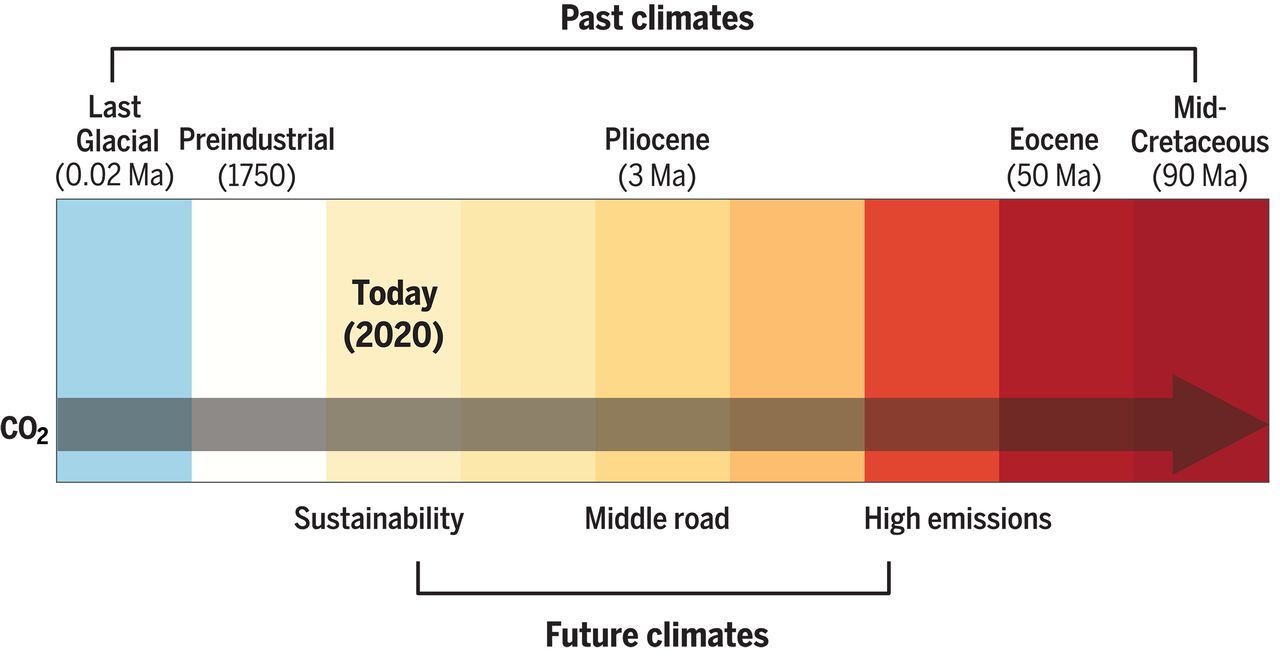Past is key to predicting future climate, scientists say
New paper urges greater use of paleoclimate data in climate model development
Nov 6, 2020 - by Staff
Nov 6, 2020 - by Staff

Carbon dioxide concentrations have been higher than they are today in Earth's distant past. Climate scientists can use paleoclimate data to help guide climate model development and to better understand how sensitive the Earth is to increasing carbon dioxide emissions. (Image courtesy Science.)
An international team of climate scientists -- including two scientists from the National Center for Atmospheric Research (NCAR) -- suggests that research centers around the world using numerical models to predict future climate change should include simulations of past climates in their evaluations and statements of their model performance.
"We urge the climate model developer community to pay attention to the past and actively involve it in predicting the future," said Jessica Tierney, an associate professor in the University of Arizona's Department of Geosciences and lead author of a new research review paper in the journal Science. "If your model can simulate past climates accurately, it likely will do a much better job at getting future scenarios right."
Over the years, scientists at NCAR have run simulations of a range of past climates with the Community Earth System Model (CESM).
"In the case of CESM model series, we find that CESM1.2 matches well the broad features in global temperature seen in the geological record of past climates, which lends strong support for the model’s ability to predict large-scale future warming,” said NCAR scientist Jiang Zhu, a study co-author.
As more and better information becomes available about climates in Earth's distant history – reaching back many millions of years before humans existed – past climates become increasingly relevant for improving scientists' understanding of how key elements of the climate system are affected by greenhouse gas levels, according to the Science paper's authors. Unlike historic climate records, which typically only go back a century or two – a mere blink of an eye in the planet's climate history – paleoclimates cover a vastly broader range of climatic conditions that can inform climate models in ways historical data cannot. These periods in Earth's past span a large range of temperatures, precipitation patterns and ice sheet distribution.
"Past climates should be used to evaluate and fine-tune climate models," Tierney said. "Looking to the past to inform the future could help narrow uncertainties surrounding projections of changes in temperature, ice sheets and the water cycle."
The co-authors from NCAR are Jiang Zhu and Bette Otto-Bliesner.
Read the full news release at the University of Arizona.
Title: Past climates inform the future
Authors: Jessica E. Tierney, Christopher J. Poulsen, Isabel P. Montañez, Tripti Bhattacharya, Ran Feng, Heather L. Ford, Bärbel Hönisch, Gordon N. Inglis, Sierra V. Petersen, Navjit Sagoo, Clay R. Tabor, Kaustubh Thirumalai, Jiang Zhu, Natalie J. Burls, Gavin L. Foster, Yves Goddéris, Brian T. Huber, Linda C. Ivany, Sandra Kirtland Turner, Daniel J. Lunt, Jennifer C. McElwain, Benjamin J. W. Mills, Bette L. Otto-Bliesner, Andy Ridgwell, and Yi Ge Zhang
Journal: Science